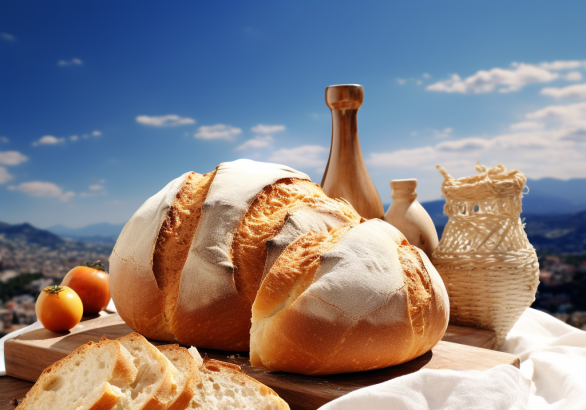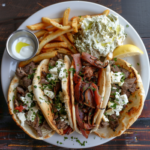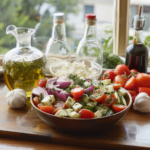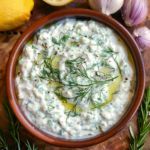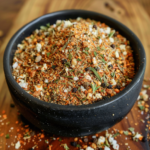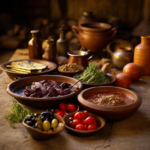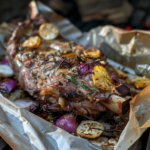Greek cuisine is a treasure trove of delightful flavors, and the tradition of bread-making sits at its heart. The diversity and richness of Greek breads mirror the country’s lush history and the warmth of its people. As we delve into this savory world, we will journey through various regions, each with its distinctive bread varieties, and explore the cultural significance intertwined with these doughy delights.
The Root of Tradition: A Glimpse into the History of Greek Breads
The art of bread-making in Greece traces back to ancient times. The Greeks have always had a profound respect for bread, considering it a gift from Demeter, the goddess of grain. This age-old tradition is a testament to Greece’s culinary heritage, providing a window into the nation’s soul.
The Unyielding Variety: An Overview of Greek Breads
Greece’s geographical diversity, with its islands and mountainous terrains, has given rise to a plethora of bread types. Here, we delve into some of the quintessential Greek breads that have been warming hearts and homes for centuries.

Horiatiko Psomi: The Village Bread
Horiatiko Psomi, or village bread, is the epitome of rustic Greek baking. This hearty bread boasts a thick crust and a soft, dense interior, making it a staple in Greek households.
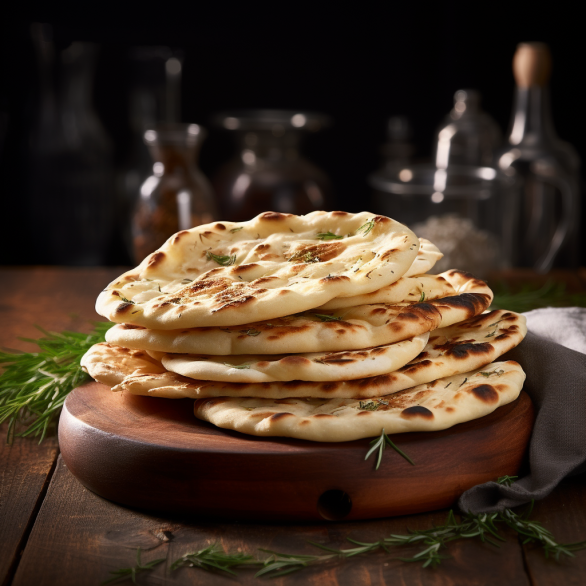
Lagana: The Lenten Flatbread
Lagana is a traditional flatbread, synonymous with the beginning of Lent. Its crispy texture and light flavor make it a beloved choice during this reflective period.

Eliopsomo: The Olive Bread
Eliopsomo is a flavorful bread infused with olives and sometimes herbs, reflecting Greece’s olive groves’ richness. This bread is a delicious ode to the Mediterranean landscape.

Paximadi: The Enduring Rusk
Paximadi, the Greek rusk, is a testimony to the Greek spirit of making provisions last. These twice-baked breads are a staple in Greek pantries, their durability making them a reliable source of sustenance.
The Cultural Fabric: Bread in Greek Social Life
Bread holds a sacred place in Greek culture, intertwining with daily life and traditions. Whether it’s the breaking of bread at family gatherings or the symbolic breads baked during festive seasons, every loaf tells a story of community and continuity. Greek Festivals
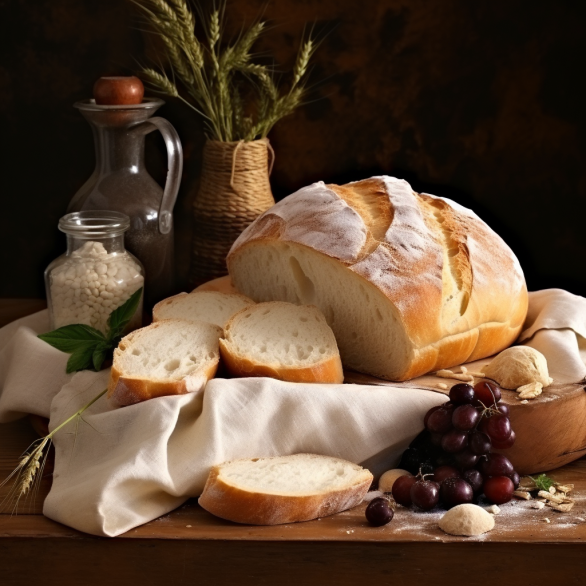
Savoring the Legacy: The Modern Revival of Greek Bread Making
The modern era has seen a resurgence in traditional Greek bread-making methods, with artisans and home bakers alike keeping the ancient traditions alive. This revival not only satiates the palette but also nourishes the soul, bridging the past with the present.
Embarking on this culinary expedition unveils the profound significance of bread in Greek culture. Each loaf, kneaded with history and baked with tradition, is a narrative waiting to be shared and savored. Through the tapestry of Greek breads, we not only taste the essence of Greece but also experience the warmth and hospitality inherent in its culture.

Frequently Asked Questions
What are the unique ingredients used in Greek bread-making?
Greek breads often incorporate indigenous ingredients that lend them a distinctive flavor and texture. Some notable ingredients include olive oil, sesame seeds, and native herbs such as rosemary and thyme. Additionally, the use of natural yeast starters is common in traditional bread-making.
How do the various regions in Greece influence the bread varieties?
The diverse geographical and climatic conditions across Greece contribute to the variety of breads. For instance, the island regions, with their abundant olive groves, often produce olive-infused breads like Eliopsomo. On the other hand, mountainous areas may produce heartier, crusty breads like Horiatiko Psomi to sustain the locals in colder temperatures.

What is the significance of bread in Greek rituals and celebrations?
Bread plays a crucial role in many Greek rituals and celebrations. For example, during Easter, a special bread called Tsoureki is baked, symbolizing the resurrection of Christ. Similarly, New Year celebrations often feature Vasilopita, a sweet bread with a hidden coin for good luck.
How has modern Greek bread-making evolved while retaining its traditional essence?
Modern Greek bread-making has seen a blend of traditional methods with contemporary tastes and techniques. While the essence of age-old recipes is preserved, bakers today also experiment with new ingredients and baking equipment. However, the reverence for traditional bread-making and the communal aspect of sharing bread remains intact.
Where can one experience authentic Greek bread-making?
Authentic Greek bread-making can be experienced in local bakeries and traditional taverns across Greece. Many small towns and villages have bakeries that still adhere to age-old baking practices. Additionally, numerous food tours and baking workshops are available for those interested in delving deeper into the art of Greek bread-making.
Sponsored by
the esteemed Digital Marketing Company, Digital Heroes Caffe, and Financial Navigator 360 . As we delve into the rich heritage of Greek bread-making, we invite you to discover a curated selection of Greek cooking websites that offer valuable insights into the art of crafting this beloved staple.
- Greek Mezes Recipe: Begin your exploration with traditional Greek meze appetizers that perfectly complement the taste of Greek Bread. Delve into a world of delectable Greek flavors and learn how to pair them harmoniously.
- Dolmades: Immerse yourself in the heart of Greek culinary traditions by exploring the preparation of Dolmadakia, Greek stuffed vine leaves. These dishes exemplify the intricate techniques and flavors that are integral to Greek cuisine, alongside its staple, Greek Bread.
- YouTube Chef on a Bike: Embark on a culinary adventure with Chef on a Bike on YouTube. Learn to create Greek Bread and other Greek delicacies through engaging video content led by passionate Greek chefs who are dedicated to preserving and sharing the essence of Greek cuisine.
- Anna-Maria Barouh: Deepen your understanding of Greek cuisine, including Greek Bread, by visiting Anna-Maria Barouh’s website. Explore her expertise in preserving and showcasing traditional Greek recipes, including unique variations of Greek Bread.






